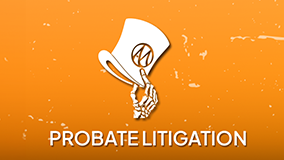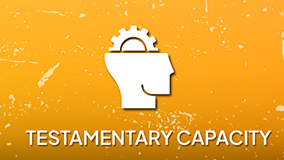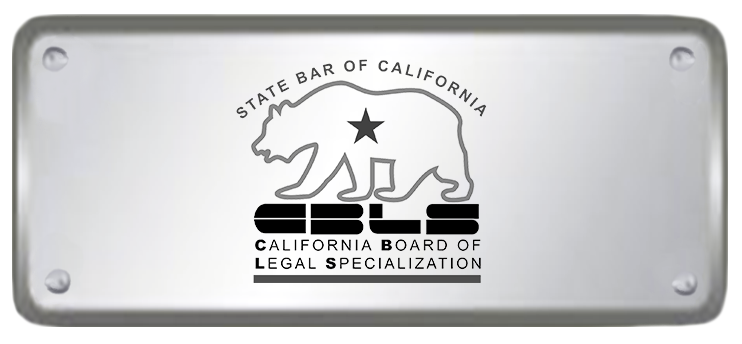THE HEGGSTAD PETITION IN CALIFORNIA
The Heggstad Petition is a legal mechanism that allows for the transfer of assets to a trust, even if those assets were not formally included in the trust agreement. This petition takes its name from the landmark California case, Estate of Heggstad (1993), which established the precedent for using this approach. The Heggstad Petition has since become a widely recognized and utilized method in trust administration, offering a valuable solution to rectify omissions or oversights in trust funding. At Antonyan Miranda, we have a team of experienced attorneys that can provide legal guidance and representation throughout the Heggstad Petition process.
What is the Purpose of the Heggstad Petition?
The primary purpose of the Heggstad Petition is to overcome a common issue in trust administration, known as “unfunded” or “omitted” assets. These are assets that were intended to be part of a trust but were not properly transferred during the trust’s creation or funding process. In such cases, these assets may inadvertently become subject to probate, potentially resulting in delays, additional expenses, and complications for beneficiaries.
The Heggstad Petition offers a remedy by allowing a court to confirm that certain assets, despite not being formally titled in the trust instrument, should still be considered part of the trust estate. By doing so, the court can avoid the need for probate administration and ensure that the assets are distributed according to the settlor’s intentions.
The most common scenario seen with regard to a Heggstad Petition is the refinanced home. It is common that the lender “takes” the property out of the Trust for purposes of refinancing the property. The lender will tell you that this is required and that they will “put” the property back into the Trust following the refinance; however, this almost never happens. The owner of the property believes the property is titled in the name of the Trust when in fact it is not. On their passing, this issue has never been resolved subjecting the property to Probate.
What are the Requirements for the Heggstad Petition?
To successfully file a Heggstad Petition, certain requirements must be met, including:
INTENT:
The settlor’s intent to include the omitted asset in the trust must be proven. This can be established through various means, such as evidence of the settlor’s discussions, correspondence, or other documentation that demonstrates an intention to include the asset.
TRUST DOCUMENT:
The trust document itself must exhibit a clear intention to include the omitted asset. While the asset may not be explicitly listed, the trust agreement should contain provisions that support the inclusion of assets of a similar nature or description.
ADEQUATE DESCRIPTION:
The asset must be sufficiently described or identifiable within the trust instrument. Vague or general descriptions may lead to challenges, so it is essential to ensure clarity in identifying the asset.
What are the Advantages of the Heggstad Petition in Trust Administration?
AVOIDANCE OF PROBATE:
By successfully establishing the inclusion of an omitted asset through a Heggstad Petition, the need for probate proceedings can be bypassed. This saves time, reduces costs, and streamlines the distribution process.
PRESERVATION OF THE TRUST’S INTENT:
The petition ensures that the settlor’s intentions are honored, as assets that were inadvertently omitted from the trust can still be distributed according to the trust’s terms.
ASSET PROTECTION:
By confirming the inclusion of an omitted asset in the trust, it becomes subject to the trust’s protective provisions. This can be particularly valuable in shielding assets from potential creditors or legal claims.
INCREASED FLEXIBILITY:
The Heggstad Petition provides a degree of flexibility in trust administration, enabling the inclusion of omitted assets without requiring formal amendments to the trust agreement. This can be advantageous when the omission is discovered after the settlor’s passing or when the trust is irrevocable.
Why Should I Hire an Attorney to Help Me File a Heggstad Petition?
The experienced attorneys at Antonyan Miranda can provide you with the necessary legal support, increase the likelihood of success, and help navigate any complexities or challenges that may arise during the process of filing a Heggstad petition. Our firm can provide legal guidance in the following ways:
LEGAL EXPERTISE:
The estate planning and probate attorneys at Antonyan Miranda have the necessary knowledge and expertise to guide you through the Heggstad petition process. We understand the legal requirements, deadlines, and potential challenges involved.
ASSESSMENT OF YOUR CASE:
Our law firm will review your situation and assess the viability of a Heggstad petition. We will examine the trust document, the assets in question, and any relevant evidence to determine if a Heggstad petition is appropriate and likely to succeed.
PREPARATION OF THE PETITION:
Our law firm will prepare the necessary legal documents for the Heggstad petition, including a detailed petition and supporting evidence. We will ensure that the petition meets the specific requirements set forth by California law and includes all relevant information and evidence to support your claim.
FILING OF COURT REPRESENTATION:
Our law firm will handle the filing of the petition with the appropriate California court. We will also represent you during any court hearings or proceedings related to the Heggstad petition. This includes presenting arguments, advocating for your rights, and addressing any objections raised by other parties.
COMMUNICATION AND NEGOTIATION:
If there are other beneficiaries or interested parties involved, our law firm can help facilitate communication and negotiation between all parties. We will work towards a resolution that protects your interests and aims to achieve a favorable outcome.
EXPERT WITNESS AND EVIDENCE:
In some cases, expert witnesses or additional evidence may be necessary to support your Heggstad petition. Our law firm can identify and engage relevant experts, such as appraisers or trust administrators, and gather the necessary evidence to strengthen your case.
ALTERNATIVE STRATEGIES:
If a Heggstad petition is not feasible or may not be the best approach for your situation, our law firm can explore alternative strategies to achieve your objectives. We can discuss other options, such as a petition for probate or trust reformation, and help you determine the most appropriate course of action.
The Heggstad Petition serves as a powerful tool in trust administration, allowing for the inclusion of omitted assets and bypassing the need for probate. By establishing the settlor’s intent and satisfying certain requirements, this petition provides a practical and efficient solution to rectify errors or oversights in trust funding. However, due to the complexity and potential variations in state laws, it is essential to consult with a knowledgeable attorney to ensure compliance with the specific requirements of your jurisdiction.
At Antonyan Miranda, we aggressively advocate for your interests to help secure all that is important to you. Call us at 619-255-7744 to speak with one of our Concierge attorneys or visit us at www.expertprobatelaw.com for more information.
FOLLOW US!
THE HEGGSTAD PETITION IN CALIFORNIA
The Heggstad Petition is a legal mechanism that allows for the transfer of assets to a trust, even if those assets were not formally included in the trust agreement. This petition takes its name from the landmark California case, Estate of Heggstad (1993), which established the precedent for using this approach. The Heggstad Petition has since become a widely recognized and utilized method in trust administration, offering a valuable solution to rectify omissions or oversights in trust funding. At Antonyan Miranda, we have a team of experienced attorneys that can provide legal guidance and representation throughout the Heggstad Petition process.
What is the Purpose of the Heggstad Petition?
The primary purpose of the Heggstad Petition is to overcome a common issue in trust administration, known as “unfunded” or “omitted” assets. These are assets that were intended to be part of a trust but were not properly transferred during the trust’s creation or funding process. In such cases, these assets may inadvertently become subject to probate, potentially resulting in delays, additional expenses, and complications for beneficiaries.
The Heggstad Petition offers a remedy by allowing a court to confirm that certain assets, despite not being formally titled in the trust instrument, should still be considered part of the trust estate. By doing so, the court can avoid the need for probate administration and ensure that the assets are distributed according to the settlor’s intentions.
The most common scenario seen with regard to a Heggstad Petition is the refinanced home. It is common that the lender “takes” the property out of the Trust for purposes of refinancing the property. The lender will tell you that this is required and that they will “put” the property back into the Trust following the refinance; however, this almost never happens. The owner of the property believes the property is titled in the name of the Trust when in fact it is not. On their passing, this issue has never been resolved subjecting the property to Probate.
What are the Requirements for the Heggstad Petition?
To successfully file a Heggstad Petition, certain requirements must be met, including:
INTENT:
The settlor’s intent to include the omitted asset in the trust must be proven. This can be established through various means, such as evidence of the settlor’s discussions, correspondence, or other documentation that demonstrates an intention to include the asset.
TRUST DOCUMENT:
The trust document itself must exhibit a clear intention to include the omitted asset. While the asset may not be explicitly listed, the trust agreement should contain provisions that support the inclusion of assets of a similar nature or description.
ADEQUATE DESCRIPTION:
The asset must be sufficiently described or identifiable within the trust instrument. Vague or general descriptions may lead to challenges, so it is essential to ensure clarity in identifying the asset.
What are the Advantages of the Heggstad Petition in Trust Administration?
AVOIDANCE OF PROBATE:
By successfully establishing the inclusion of an omitted asset through a Heggstad Petition, the need for probate proceedings can be bypassed. This saves time, reduces costs, and streamlines the distribution process.
PRESERVATION OF THE TRUST’S INTENT:
The petition ensures that the settlor’s intentions are honored, as assets that were inadvertently omitted from the trust can still be distributed according to the trust’s terms.
ASSET PROTECTION:
By confirming the inclusion of an omitted asset in the trust, it becomes subject to the trust’s protective provisions. This can be particularly valuable in shielding assets from potential creditors or legal claims.
INCREASED FLEXIBILITY:
The Heggstad Petition provides a degree of flexibility in trust administration, enabling the inclusion of omitted assets without requiring formal amendments to the trust agreement. This can be advantageous when the omission is discovered after the settlor’s passing or when the trust is irrevocable.
Why Should I Hire an Attorney to Help Me File a Heggstad Petition?
The experienced attorneys at Antonyan Miranda can provide you with the necessary legal support, increase the likelihood of success, and help navigate any complexities or challenges that may arise during the process of filing a Heggstad petition. Our firm can provide legal guidance in the following ways:
LEGAL EXPERTISE:
The estate planning and probate attorneys at Antonyan Miranda have the necessary knowledge and expertise to guide you through the Heggstad petition process. We understand the legal requirements, deadlines, and potential challenges involved.
ASSESSMENT OF YOUR CASE:
Our law firm will review your situation and assess the viability of a Heggstad petition. We will examine the trust document, the assets in question, and any relevant evidence to determine if a Heggstad petition is appropriate and likely to succeed.
PREPARATION OF THE PETITION:
Our law firm will prepare the necessary legal documents for the Heggstad petition, including a detailed petition and supporting evidence. We will ensure that the petition meets the specific requirements set forth by California law and includes all relevant information and evidence to support your claim.
FILING AND COURT REPRESENTATION:
Our law firm will handle the filing of the petition with the appropriate California court. We will also represent you during any court hearings or proceedings related to the Heggstad petition. This includes presenting arguments, advocating for your rights, and addressing any objections raised by other parties.
COMMUNICATION AND NEGOTIATION:
If there are other beneficiaries or interested parties involved, our law firm can help facilitate communication and negotiation between all parties. We will work towards a resolution that protects your interests and aims to achieve a favorable outcome.
EXPERT WITNESS AND EVIDENCE:
In some cases, expert witnesses or additional evidence may be necessary to support your Heggstad petition. Our law firm can identify and engage relevant experts, such as appraisers or trust administrators, and gather the necessary evidence to strengthen your case.
ALTERNATIVE STRATEGIES:
If a Heggstad petition is not feasible or may not be the best approach for your situation, our law firm can explore alternative strategies to achieve your objectives. We can discuss other options, such as a petition for probate or trust reformation, and help you determine the most appropriate course of action.
The Heggstad Petition serves as a powerful tool in trust administration, allowing for the inclusion of omitted assets and bypassing the need for probate. By establishing the settlor’s intent and satisfying certain requirements, this petition provides a practical and efficient solution to rectify errors or oversights in trust funding. However, due to the complexity and potential variations in state laws, it is essential to consult with a knowledgeable attorney to ensure compliance with the specific requirements of your jurisdiction.
At Antonyan Miranda, we aggressively advocate for your interests to help secure all that is important to you. Call us at 619-255-7744 to speak with one of our Concierge attorneys or visit us at www.expertprobatelaw.com for more information.

























